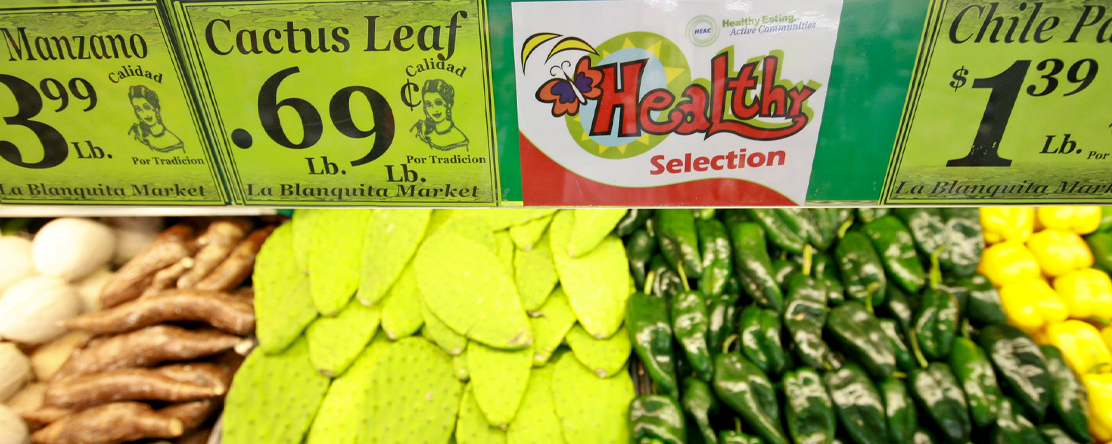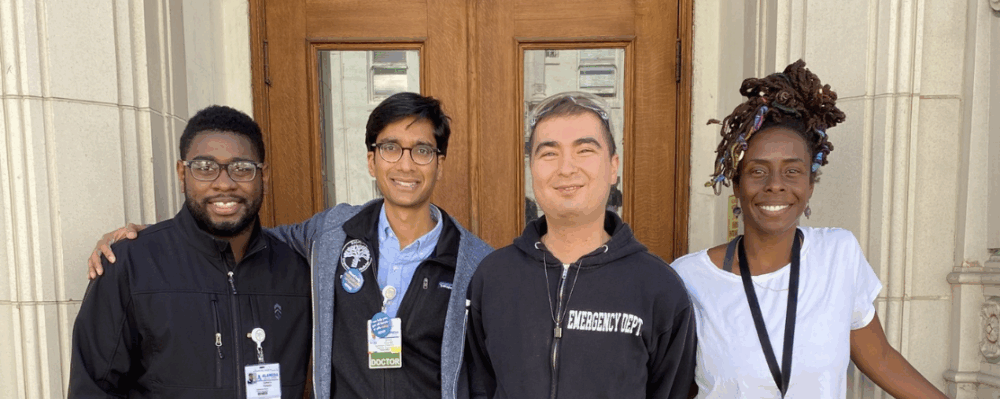
Update
Project by PHI’s Cultiva La Salud Wins Let’s Get Healthy California Innovation Challenge
-
Focus Areas
Healthy Communities -
Issues
Nutrition & Food Security, Physical Activity, Population Health, Rural Health -
Programs
Cultiva La Salud/Central California Regional Obesity Prevention Program

An innovative project from PHI’s Cultiva La Salud is among 23 winners chosen by the Let’s Get Healthy California Innovation Challenge, the California Health and Human Services Agency (CHHS) and the California Department of Public Health (CDPH) announced yesterday. The challenge received nearly 100 submissions from across the state this summer.
 Cultiva La Salud’s submission titled “Street Vendors: Bringing Healthy Food to Central Valley Residents” is a fledgling, innovative project in Fresno. In 2015, Cultiva La Salud began this work as a result of funding from the Centers for Disease Control’s Racial and Ethnic Approaches to Community Health (REACH) initiative. Cultiva’s REACH initiative focuses on promoting healthy eating and active living among Latinos. The project is also supported through a grant from CA FreshWorks Fund and resource support from FNV.
Cultiva La Salud’s submission titled “Street Vendors: Bringing Healthy Food to Central Valley Residents” is a fledgling, innovative project in Fresno. In 2015, Cultiva La Salud began this work as a result of funding from the Centers for Disease Control’s Racial and Ethnic Approaches to Community Health (REACH) initiative. Cultiva’s REACH initiative focuses on promoting healthy eating and active living among Latinos. The project is also supported through a grant from CA FreshWorks Fund and resource support from FNV.
At the core of the Vendors for Health pilot project is the intent to increase access to healthy foods in food desert neighborhoods by working with existing food vendors and converting them to becoming “healthy” food vendors. By removing unhealthy food while increasing access to healthy options the goal is to promote healthier diets and ultimately reduce the onset of chronic disease. Freshly-cut fruits, vegetables, and/or fruit smoothies or vegetable juices are just some of the examples of what the mobile vendors will be selling in the coming months. In addition, the mobile vendors will be sharing nutrition information and connecting residents to supplemental nutrition programs, as well as sharing bike safety information – as the mobile vendors will be on bikes.
The mobile vendors will also be educated about local food system policies and opportunities to advocate for instituting a just and fair food system in Fresno. This is critical, as mobile vendors are microbusinesses that are often marginalized and neglected. The mobile vendors will serve as champions in their community providing access to healthy foods, but also serving as role models for biking and as ambassadors linking business to public health and prevention.
Cultiva La Salud’s winning innovation and those of the other winners will be recognized and discussed as part of a statewide Innovation Conference in Sacramento on January 26.
Read the full press release from CHHS and CDPH below, and help spread the word with a tweet: Congrats @CultivaLaSalud! Central Valley #foodenviro project finalist in Let’s Get Healthy CA Innovation Challenge: http://bit.ly/1kQ3VgW
- “Bright Beginnings”, Ventura County Public Health, Ventura County
- “Building Broccoli Smiles through Food Literacy”, Food Literacy Center, Sacramento, Sacramento County
- “Collaborative Partnerships and Environments for Early Childhood Health”, Healthy & Active Before 5 , Contra Costa County
- “Healthy Babies are Worth the Wait Community Program”, March of Dimes, Barstow, Victorville, Apple Valley, Hesperia, and Adelanto, San Bernardino County
- “AARP Livability Index”, AARP
- “Ending Hunger in Orange County”, Waste Not OC, Anaheim and Orange, Orange County
- “Growing Healthy Habits—A Community Garden Model”, Yolo County Health and Human Services Agency, Woodland, Yolo County
- “Skid Row Healthy Food Micro-Enterprise Project”, Los Angeles Community Action Network, Los Angeles, Los Angeles County
- “Street Vendors: Bringing Healthy Food to Central Valley Residents”, Cultiva La Salud—Public Health Institute, Southeast Fresno, Fresno County
- “How to Make Advance Care Planning Easier”, University of California, San Francisco, San Francisco County
- “Medical-Legal Partnership for Seniors”, University of California San Francisco/University of California Hastings Consortium on Law, Science & Health Policy, San Francisco, San Francisco County
- “UCLA Health/Coalition for Compassionate Care of California Advance Care Planning Initiative (ACPI)”, University of California, Los Angeles, (UCLA) Health and Coalition for Compassionate Care of California, Los Angeles County
- “Clinic in the Park: Connect, Screen, Educate”, Clinic in the Park: Connect, Screen, Educate, a fiscally sponsored project of OneOC, Anaheim, Costa Mesa, Irvine, Santa Ana and Tustin, Orange County
- “The MobileMAMA Text Program: Integrating Medical Care and Social Services for Pregnant Women in the Safety Net”, Harbor-UCLA Medical Center, Los Angeles County Department of Health Services, and the Robert Wood Johnson Foundation Clinical Scholars Program
- “Santa Rosa Community Health Centers Care Coordination Program”, Santa Rosa Community Health Centers (SRCHC), Santa Rosa, Sonoma County
- “A Culture of Health: Creation of the Healthy RC Steering Committee”, City of Rancho Cucamonga, Healthy RC, Rancho Cucamonga, San Bernardino County
- “Active Design Guidelines and Icon”, Sacramento, Sacramento County
- “Live the Challenge”, Building Healthy Communities South Kern, Arvin, Lamont, Weedpatch, and Greenfield, Kern County
- “Walk With Friends”, Health Education Council, South Sacramento Valley Hi neighborhood, Sacramento County
- “Care Transitions”, Partnership HealthPlan of California, Northern California
- “Improving Healthcare Quality & Safety While Reducing Costs Through Clinical Pharmacy Service Integration”, University of Southern California School of Pharmacy and AltaMed Health Services, Los Angeles County and Orange County
- “Increasing Tdap Vaccination Among Pregnant Medi-Cal Women In Los Angeles County”, Los Angeles County Comprehensive Perinatal Services Program, San Fernando Valley, Los Angeles County
- “RxSafe Marin: Marin County Prescription Drug Misuse and Abuse Initiative”, Marin County Department of Health and Human Services, Marin County
More Updates
Work With Us
You change the world. We do the rest. Explore fiscal sponsorship at PHI.
Support Us
Together, we can accelerate our response to public health’s most critical issues.
Find Employment
Begin your career at the Public Health Institute.



